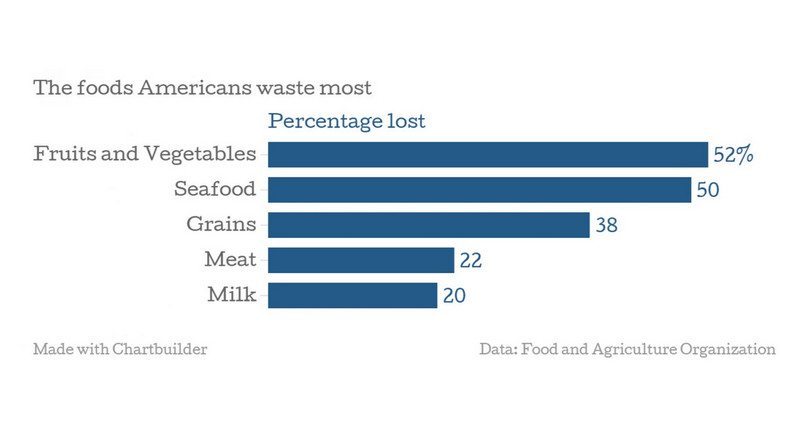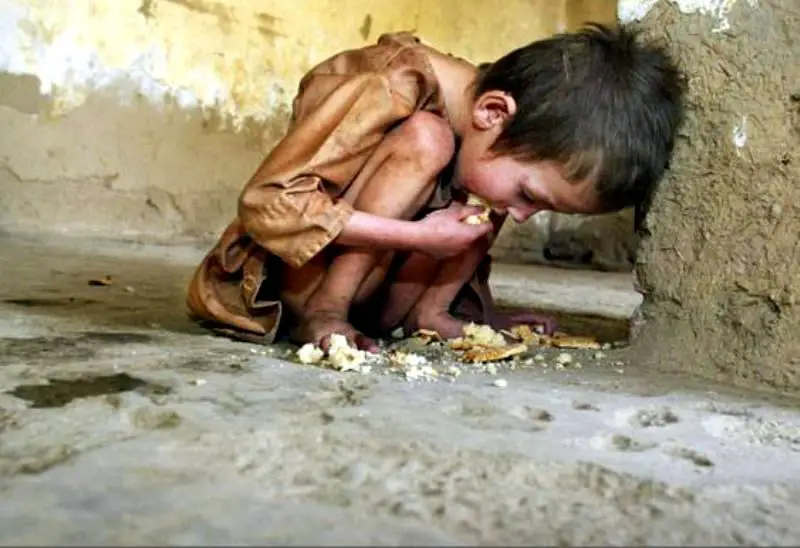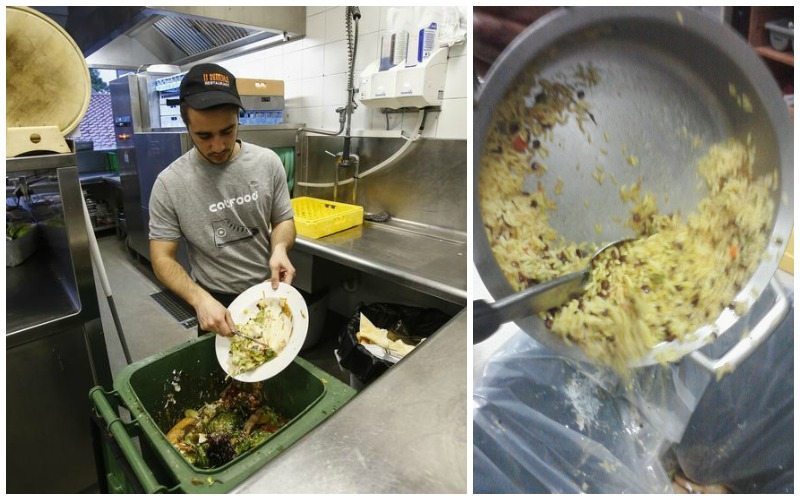Do you realise that wasting food means more than just wasting blessings and money? It also bears a serious consequence that is impacting on us in a silent assault… it contributes directly and significantly to the production of greenhouse gases!
Food waste is most apparent in developed countries like Australia, Canada, Germany and the United States where up to an estimated 40 percent of all food ends up as garbage. According to the latest available estimate by the U.S. Environmental Protection Agency, for the year 2012, the country threw out about 35 million tons of food. This number is almost three times what Americans discarded in 1960 when it was ‘only‘ 12.2 million tons.
In terms of tonnage, food used to be less than 10 percent of the total waste in America’s garbage during the 1980s. Today, it exceeds any other kind of garbage in terms of weight.

That’s an astounding 243 lbs (110 kgs) of annual food waste for every man, woman and child in the country!
Looking at this issue from a wider perspective, the amount of food wasted by consumers from first world countries is almost equal to the the total of all food available in sub-Saharan Africa. The global ‘well-off’ waste 222 million tons, while total sub-Saharan Africa produces 230 million tons!
These facts highlight the disparities between the affluent and the food shortages and chronic hunger many people are experiencing now in different parts of the world.
Everyone contributes to food waste – from people in households like yours to those who run restaurants and other food establishments and even food processors, wholesalers and retailers. And of course, this doesn’t only happen in first world countries – it is present in every place where food is produced and consumed, just to lesser or greater degrees.
In every level of the market, there is food wasted. Producers, distributors and retailers get rid of pieces and parts that are marked or spoiled. A lot of ingredients and food are discarded by restaurants. Most if not all prohibit giving their leftovers to the homeless, regardless of whether it’s been ‘plated’ let alone touched. As individuals, we’re also guilty of throwing away food when we take too large a serving and then leave it uneaten.
As hard as it is to believe more than half of all fruit and vegetables grown in the USA end up as garbage. Here’s the breakdown by produce type:

THE ENVIRONMENTAL COST:
Most of that waste ends up in landfill sites. The decomposing food releases methane, which is a greenhouse gas 20 times more toxic than carbon dioxide. Even if the waste is incinerated, there is still a high environmental cost.
But it’s not just when we dispose of it as waste that food produces greenhouse gases!
The growing and production of food has an environmental cost. About one third of the entire globe’s carbon emissions come from agriculture. More than 15 percent comes from the livestock industry.
So this is what the big picture looks like: We are already sacrificing our environment just by making food. And by throwing it away – some not even reaching the plate – we are putting that sacrifice and all other investments to waste and then causing more harm.
Everybody has their own roles to play to change this situation – producers, retailers and eaters. There are already a number of domestic and international initiatives that aim to mitigate food waste and hunger. For one, the D.C. Central Kitchen, based in Washington D.C., converts recovered food into healthy meals and distributes them to partner agencies, feeding the less fortunate. Discussions to address food waste in grocery stores and restaurants are also being held.
As an individual, simply buying and cooking only the food you can comfortably eat will make a difference. It’s a great example to teach your children.
As an aside, as a child, my parents sometimes allowed my siblings and I to scoop food on to our own plates. As kids will, we inevitably loaded our plates to excess – especially with our favourites. Inevitably, our stomachs were not as big as our eyes but our parents always made us sit there contemplating the food we were preparing to waste. Thirty minutes staring at a plate of half-finished food is an eternity to a child wanting to go and play. We quickly learned that it was smarter to take less and ask for more than to take more and pay the penalty for waste. It was a lesson we’ve carried with us to adulthood… not wasting food is now an effortless choice we make all the time.
If we can teach this simple lesson to all children, they will grow with a different attitude to waste. The by-product will be a healthier environment and a more evenly fed world. As an adult, you can make a conscious decision today to reduce food wastage by planning meals and shopping accordingly.

As they say, “There is more than enough food in the world to feed the entire human population.” Wouldn’t it be nice if we could make it happen?
To find out what’s good and what’s not when that date rolls past, you might want to read this post. Hint, there is only ONE product that should never be consumed after that date has passed!






